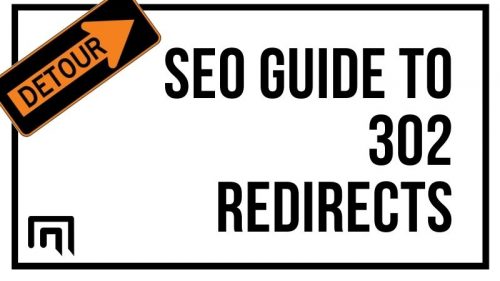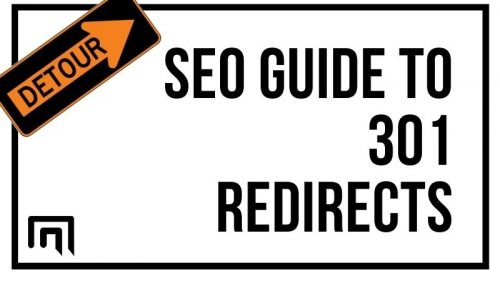Are you curious what happens if Google got an http 302 response at crawl time or what happens when a user’s browser receives one of these codes? We’re going to be covering these temporary redirects in great detail.
In fact, html code 302 is used on websites all the time – your site likely uses them, too.
Contents
What is a 302 redirect status response code?
If a server returns a 302 response code, this means that the resource has moved temporarily. The key thing to understand is that:
- The resource is expected to return
When the resource isn’t expected to return, a 301 redirect is ideal.
How does a 302 redirect work?
When a resource is requested, often a URL, the server will look for the resource and send http response codes 302 if the redirect exists. You must create the redirect for the server to provide this code.
However, the browser will also receive header information that tells the browser where the temporary resource is located.
The browser will then load the new resource location instead of the original.
How do you handle a 302 response?
Browsers or bots will handle the response code for the end-user. If a redirect is made in error, it’s up to the server administrator to track down where the redirect exists and fix the issue. We’ll be covering this in greater detail below.
How to create a 302 redirect
Creating a redirect can be done in many ways, including:
- Logging into cPanel, going to Domains, clicking on Redirects and setting it up.
- Uploading or editing a .htaccess file with redirect instructions
- Using a plugin to create the redirect
A 302 redirect example using a .htaccess file with the right coding is found below:
Redirect 302 / https://mazeless.com/You can upload .htaccess files to the root path or in specific folders to run this code.
Do 302 redirects affect SEO?
Fortunately, there shouldn’t be a 302 redirect SEO impact. Since the code is telling search engines that the page will return, the original page will maintain its rankings.
In fact, Google states the following:

What does a 302 redirect do?
These response codes tell the user’s browser or search engines to look for the resource at another location. For example, if your site is undergoing maintenance, you may tell the browser to go to a page that states the site is undergoing maintenance and will be back soon.
However, UX may be improved, too.
302 Improves UX
User experience is crucial to a site’s success. If a user clicks on your link and receives a 404 error or a blank page, they’ll return to the search results and go to another site. When http 302 error is received instead, it:
- Sends users to related content or messages
- Informs users of issues, such as a product being out of stock
Instead of losing traffic and sales, a temporary redirect improves the user experience.
When to use 302 redirects
If you’re struggling to figure out when to use a 302 redirect, the following list is a good example:
- You’re in the process of updating a page
- Site maintenance is ongoing
- Adding new features to a site and functionality may be impacted
- Time-sensitive promotions are taking place
- Products are unavailable or out-of-stock
- Pages are broken for some reason, usually an error in coding
- A/B testing different landing pages
- Sending a user to a desktop version of a page
Note: There’s no difference between a 302 vs. 307 redirect, so you can use each for any of these examples. However, 302s are more common.
Indexation for 302 redirects
A 302 response will keep the original resource in Google’s index. The redirect is temporary, so the new temp resource shouldn’t be indexed.
Websites on Windows Servers
Apache is often the go-to web server people think of when they want to redirect a webpage. But there are also Windows servers that host some of the world’s largest websites. Unfortunately, it’s difficult to set up redirections on these systems.
The main issue is that the resource must exist.
So, for example, you need to create a resource and leave it in place for the redirect to work. If you delete a directory that you’re trying to redirect, it won’t work. You can see a basic redirect for an ASP site here:
<%@ Language=VBScript %>
<%
Response.Status=”302 Found” Response.AddHeader “Location”,”http://xyzname.com/NewPage.asp”
%>However, the code must be placed inside the page being redirected for this to work.
Why is it preferred to use 302 redirect instead of 301?
A 302 vs. 301 is often debated among site owners. Many people choose to use 301 redirects because they pass along SEO value. For example, let’s say that you have a product page for version 1 of a camera and the camera is no longer being produced because version 2 exists.
You can transfer some of the SEO value to the new product page with a 301 redirect.
However, you may prefer to use a 302 redirect if the product is expected to go back in stock. For example, let’s assume the following:
- You sell PlayStation 4 and 5
- You temporarily redirect your PS5 to the PS4 page when it’s out of stock
- A message appears stating, “PS 5 is out of stock, but we have plenty of PS4 available”
In this example, you’re temporarily sending users to a similar product they may prefer and telling them of the issue.
When a resource or page is expected to return in the future, it’s always best to use a 302 redirect instead of a 301.
Does a 302 automatically redirect?
Yes. Since the browser is handling the communication between the server and you, it will automatically redirect to the new resource location. However, the same communication will occur with the new resource, too.
The server will always check to see if the resource exists and send this information to the browser.
Common 302 Redirect Mistakes & How to Avoid Them
Since redirects are common and easy to implement, very few errors can occur. Typically, there are two main reasons for mistakes that may cause redirects to fail.
Why HTTP 302 Errors Happen
A 302 error means that something is wrong with:
- Server configuration
- Coding
Determine Whether the Redirects Are Valid
You can and should manually test every redirect to ensure that they’re valid. A valid redirect will successfully send header information to your browser for the new location of a resource.
You can also check for valid redirects using:
- Tools that log HTTP response codes
- Looking for errors in Google Search console
- Examining server log files
- Using a tool like our Mazeless app
If you used .htaccess to create the redirect, be sure that you review the coding. A misspelling or space can lead to an error.
A few reasons that you may be experiencing server error 302 are listed below.
Check Your Plugins
If you’re using WordPress or another CMS, be sure to update and configure all of your plugins properly. Often, if you’re using a plugin to make a redirect, the issues will be:
- Misconfiguration of the plugin
- Lack of server permission
- A plugin is outdated and no longer works properly
Properly updating and configuring the plugin should fix the issue.
Ensure That Your WordPress URL Settings Are Configured Correctly
In your WordPress dashboard, be sure that the WordPress Address and Site Address match. You can find this information by:
- Going to settings
- Clicking on general
You need to ensure that the URLs match exactly, or they can create significant site errors.
Check Your Server Configuration
An SEO 302 redirect error is often a result of a server misconfiguration. Ideally, you’ll FTP into your server and look for the .htaccess file where the redirect is located. You must locate the following and ensure that they’re written and formatted precisely as listed below:
Redirect 302 / http://newwebsitehere.com/
One wrong letter or additional spacing can lead to an error. However, if you check all of your .htaccess files, line by line, and don’t find any issues, it may be time to contact your web host.
Speak to Your Web Host
Finally, if you’ve exhausted all of your options, found that your redirect coding is accurate and that anything you can configure is done properly, contact your web host. A host will be able to check into your server configuration and examine why you’re receiving an http error 302.
Temporary redirects are powerful tools that you can use to control what happens to a resource that is temporarily unavailable. As a general rule of thumb, if a resource is going to be unavailable, you should use a 302 redirect to point the browser to its new location.
If you ever run out of stock for a product, update a page or want to perform maintenance on your site, a 302 response code is a great option.



